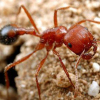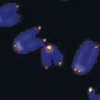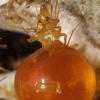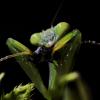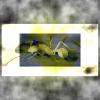- Formiculture.com
- Forums
- Gallery
- Members
- Member Map
- Chat

Yall got some experience with harvester ants?
Started By
AntaholicAnonymous
, Nov 5 2019 8:57 AM
39 replies to this topic
#21
 Offline
-
Posted November 7 2019 - 11:25 AM
Offline
-
Posted November 7 2019 - 11:25 AM
They only need seeds. Seeds have the carbs and protein they colony needs. I have seen one of my workers eat a seed in the past.
- AntaholicAnonymous likes this
#22
 Offline
-
Posted November 7 2019 - 2:57 PM
Offline
-
Posted November 7 2019 - 2:57 PM
They only NEED seeds, correct but insect protein has more protein and can really benefit the colony.
Sent from my iPhone using Tapatalk
Sent from my iPhone using Tapatalk
- AntaholicAnonymous likes this
Currently Keeping:
Pogonomyrmex Californicus Bicolor & Concolor
Pogonomyrmex Subnitidius
Camponotus Sansabeanus
#23
 Offline
-
Posted November 7 2019 - 4:07 PM
Offline
-
Posted November 7 2019 - 4:07 PM
I gonna provide them with a constant supply of seeds, a variety of insects and whatever else they take like fruits or whatever.
They know exactly what they need and I gonna adjust the supply according to how much of it they choose to consume.
Speaking about messor barbarus i know for a fact they eat more then just seeds. They could probably survive with them but I wanna give them the best I can provide and not just what's necessary.
They know exactly what they need and I gonna adjust the supply according to how much of it they choose to consume.
Speaking about messor barbarus i know for a fact they eat more then just seeds. They could probably survive with them but I wanna give them the best I can provide and not just what's necessary.
- TennesseeAnts, Broncos and DDD101DDD like this
#24
 Offline
-
Posted November 7 2019 - 4:33 PM
Offline
-
Posted November 7 2019 - 4:33 PM
Now that is a true pet owner
Sent from my iPhone using Tapatalk
Sent from my iPhone using Tapatalk
- AntaholicAnonymous likes this
Currently Keeping:
Pogonomyrmex Californicus Bicolor & Concolor
Pogonomyrmex Subnitidius
Camponotus Sansabeanus
#25
 Offline
-
Posted November 8 2019 - 8:08 AM
Offline
-
Posted November 8 2019 - 8:08 AM
I just found out that they make something called ant bread out of the seeds and eat that. That's crazy I never heard of that before. They break down the seeds mix it with saliva out comes the ant bread.
The seeds have everything they need but they love insects as well.
And they don't need much extra sugar.
Took me a bit to get the full picture but I think I understand now.
They have some preferences for nesting and I gonna make something unique can't wait to show that.
In nature they walk on paths to foraging areas and dig pretty deep but they are not born climbers but I wanna make high terrain.
Now that's where the setup is gonna be unique
The seeds have everything they need but they love insects as well.
And they don't need much extra sugar.
Took me a bit to get the full picture but I think I understand now.
They have some preferences for nesting and I gonna make something unique can't wait to show that.
In nature they walk on paths to foraging areas and dig pretty deep but they are not born climbers but I wanna make high terrain.
Now that's where the setup is gonna be unique
#26
 Offline
-
Posted November 8 2019 - 8:29 AM
Offline
-
Posted November 8 2019 - 8:29 AM
Finally I can give some info back on this thread.
They like to dig very deep cause they often life in hot and dry climates so they make deep chambers to escape the heat
They like to dig very deep cause they often life in hot and dry climates so they make deep chambers to escape the heat
#27
 Offline
-
Posted November 11 2019 - 2:52 AM
Offline
-
Posted November 11 2019 - 2:52 AM
They only need seeds. Seeds have the carbs and protein they colony needs. I have seen one of my workers eat a seed in the past.
If you have messor there's a good chance the worker was making the ant bread I was referring to 2 posts above.
They don't really directly eat the seeds but have the extra step of mixing it with saliva and that mixture is called ant bread.
They only need seeds but a variety is optimal especially insect protein.
But that's messor barbarus that's about how far my knowledge goes
#28
 Offline
-
Posted November 11 2019 - 7:22 AM
Offline
-
Posted November 11 2019 - 7:22 AM
They only need seeds. Seeds have the carbs and protein they colony needs. I have seen one of my workers eat a seed in the past.
If you have messor there's a good chance the worker was making the ant bread I was referring to 2 posts above.
They don't really directly eat the seeds but have the extra step of mixing it with saliva and that mixture is called ant bread.
They only need seeds but a variety is optimal especially insect protein.
But that's messor barbarus that's about how far my knowledge goes
Kaelwizard is talking about Pogonomyrmex Occidentalis.
He travels, he seeks the p a r m e s a n.
#30
 Offline
-
Posted November 12 2019 - 7:37 PM
Offline
-
Posted November 12 2019 - 7:37 PM
Please people use latin names when referring to your ants. Messor spp. are very different from Pogonomyrmex spp. and a lot of the advice outside of "give them seeds" is not going to be transferable.
- AnthonyP163, ANTdrew, NickAnter and 1 other like this
Currently Keeping:
Trachymyrmex septentrionalis
Pheidole pilifera
Forelius sp. (Monogynous, bicolored) "Midwestern Forelius"
Crematogaster cerasi
Pheidole bicarinata
Aphaenogaster rudis
Camponotus chromaiodes
Formica sp. (microgena species)
Nylanderia cf. arenivega
#31
 Offline
-
Posted November 13 2019 - 2:00 AM
Offline
-
Posted November 13 2019 - 2:00 AM
Idk if you're talking about me but I did.Please people use latin names when referring to your ants. Messor spp. are very different from Pogonomyrmex spp. and a lot of the advice outside of "give them seeds" is not going to be transferable.
Not in the title of the thread but in the first post and a couple in between.
I wanted to know about harvester ants in general and messor barbarus that's why I wasn't that specific in the title
Edited by AntaholicAnonymous, November 13 2019 - 2:01 AM.
#32
 Offline
-
Posted November 13 2019 - 2:16 AM
Offline
-
Posted November 13 2019 - 2:16 AM
I have 2 colonies of Messor barbarus. One around 70w and one around 30. Both begun with just a queen.
They never touch sugarwater or any other nectar or fluid, or in a really rare occasion, they would just bury it. They do need a tube of water. They live a dry area but definitely add a tube of water.
They almsost never touch insects, really sometimes a small piece of cricket will be accepted. Also really rare, mostly they just dump it as garbage. dead Fruit flies has the bigger chance to be dragged into the nest. But only seeds will do. Especially dandelion. They love it. Definitly a favorite.
When a Colony of M. barbarus is big, they almost accept everything. In the beginning u just need to have patience. And with a small amount of seeds they already come so far. No needs to buy tons. Insects is definitly not needed in such a small colony. In 2 years they only accepted twice or so a piece of cricket. It doesnt boost them.
What does boost them is leaving them alone. They hate every movement and gets alot stress. So try to take as less peeks into the formicarium. Rlly u will see the difference in growth.
That's my experience with messor.
I don't have mayors yet, but the big media is starting to develop. It's a dream species
They never touch sugarwater or any other nectar or fluid, or in a really rare occasion, they would just bury it. They do need a tube of water. They live a dry area but definitely add a tube of water.
They almsost never touch insects, really sometimes a small piece of cricket will be accepted. Also really rare, mostly they just dump it as garbage. dead Fruit flies has the bigger chance to be dragged into the nest. But only seeds will do. Especially dandelion. They love it. Definitly a favorite.
When a Colony of M. barbarus is big, they almost accept everything. In the beginning u just need to have patience. And with a small amount of seeds they already come so far. No needs to buy tons. Insects is definitly not needed in such a small colony. In 2 years they only accepted twice or so a piece of cricket. It doesnt boost them.
What does boost them is leaving them alone. They hate every movement and gets alot stress. So try to take as less peeks into the formicarium. Rlly u will see the difference in growth.
That's my experience with messor.
I don't have mayors yet, but the big media is starting to develop. It's a dream species
- AntaholicAnonymous likes this
#33
 Offline
-
Posted November 13 2019 - 12:02 PM
Offline
-
Posted November 13 2019 - 12:02 PM
That's very helpful thanks.
The video of messor barbarus eating tons of insects was a fairly large colony so they probably start taking them more later on.
I'll buy a colony with around 50 workers cause they'll be housed in a natural setup right when they get here.
So they will never have any disturbance really. I heard that they do best in natural setups and that's what they gonna get. I wanna sort of recreate their natural environment with my own twist in it.
I'll still have to learn by observing their behavior and reactions but I'm glad I got some fellow ant keepers who made sure I know enough to make them happy.
Thanks again
The video of messor barbarus eating tons of insects was a fairly large colony so they probably start taking them more later on.
I'll buy a colony with around 50 workers cause they'll be housed in a natural setup right when they get here.
So they will never have any disturbance really. I heard that they do best in natural setups and that's what they gonna get. I wanna sort of recreate their natural environment with my own twist in it.
I'll still have to learn by observing their behavior and reactions but I'm glad I got some fellow ant keepers who made sure I know enough to make them happy.
Thanks again
#34
 Offline
-
Posted November 14 2019 - 1:24 AM
Offline
-
Posted November 14 2019 - 1:24 AM
That's very helpful thanks.
The video of messor barbarus eating tons of insects was a fairly large colony so they probably start taking them more later on.
I'll buy a colony with around 50 workers cause they'll be housed in a natural setup right when they get here.
So they will never have any disturbance really. I heard that they do best in natural setups and that's what they gonna get. I wanna sort of recreate their natural environment with my own twist in it.
I'll still have to learn by observing their behavior and reactions but I'm glad I got some fellow ant keepers who made sure I know enough to make them happy.
Thanks again
I have them also with a natural outworld. Yet they both still live in testtubes attached to it. They rlly don't need that much at their first years
- AntaholicAnonymous likes this
#35
 Offline
-
Posted November 19 2019 - 3:21 AM
Offline
-
Posted November 19 2019 - 3:21 AM
I have them also with a natural outworld. Yet they both still live in testtubes attached to it. They rlly don't need that much at their first years
That's very helpful thanks.
The video of messor barbarus eating tons of insects was a fairly large colony so they probably start taking them more later on.
I'll buy a colony with around 50 workers cause they'll be housed in a natural setup right when they get here.
So they will never have any disturbance really. I heard that they do best in natural setups and that's what they gonna get. I wanna sort of recreate their natural environment with my own twist in it.
I'll still have to learn by observing their behavior and reactions but I'm glad I got some fellow ant keepers who made sure I know enough to make them happy.
Thanks again
Natural outworld as in decorated in a naturalistic way or plants, soil, sand and so on?
I'd like to know if they just don't wander out much or if they prefer the test tubes over digging a nest cause I wanna have them in soil right away.
#36
 Offline
-
Posted November 24 2019 - 8:21 AM
Offline
-
Posted November 24 2019 - 8:21 AM
From the moment water touches the ground, they start to dig in it. So i think it's very possible to give a colony of that size a natural digging outworld. Because mine still lives in test tubes, there isn't enough substrate to dig in. And there are always ants around in the outworld, especially at the water reservoir.
- AntaholicAnonymous likes this
#37
 Offline
-
Posted November 24 2019 - 11:37 AM
Offline
-
Posted November 24 2019 - 11:37 AM
From the moment water touches the ground, they start to dig in it. So i think it's very possible to give a colony of that size a natural digging outworld. Because mine still lives in test tubes, there isn't enough substrate to dig in. And there are always ants around in the outworld, especially at the water reservoir.
I'll have them in a full natural tank.
You can't see everything inside the nest but it's more like watching them in their natural environment.
Most of us know exactly what happens inside the nest so I happily trade that view with seeing their natural behavior.
Aside from that if you place heating pads they build against the glass so you can see how they make tunnels and chambers.
Not having to worry about mold or cleaning up is also a big plus if you make it bioactive wich I highly suggest.
Springtails alone make everything so much easier
- FSTP likes this
#38
 Offline
-
Posted December 4 2019 - 1:43 PM
Offline
-
Posted December 4 2019 - 1:43 PM
So I have Veromessor pergandei, and while I know they are pretty different, I just have to say mine looooooooove cut up mealworms and have become ultra picky about seeds. They will stop and bring back dead mealworms but I haven't seen them hauling seed back in ages. In fact will walk all over seeds and ignore them....
I also have a new colony of Pogonomyrmex californicus and I'm still not really sure what they are doing. They bury their nectar in sand and seem to ignore cut up mealworms. I keep adding seeds but because they are in dirt, I don't really know which, if any, they have taken into their nest.
- Broncos likes this
Formiculture Journals::
Veromessor pergandei, andrei; Novomessor cockerelli
Camponotus fragilis; also separate journal: Camponotus sansabeanus (inactive), vicinus, laevigatus/quercicola
Liometopum occidentale; Prenolepis imparis; Myrmecocystus mexicanus (inactive)
Pogonomyrmex subnitidus and californicus (inactive)
Tetramorium sp.
Termites: Zootermopsis angusticollis
Isopods: A. gestroi, granulatum, kluugi, maculatum, vulgare; C. murina; P. hoffmannseggi, P. haasi, P. ornatus; V. parvus
Spoods: Phidippus sp.
#39
 Offline
-
Posted December 6 2019 - 5:59 AM
Offline
-
Posted December 6 2019 - 5:59 AM
Judging from my experience and Drew’s, they love amaranth seeds and poppy seeds.So I have Veromessor pergandei, and while I know they are pretty different, I just have to say mine looooooooove cut up mealworms and have become ultra picky about seeds. They will stop and bring back dead mealworms but I haven't seen them hauling seed back in ages. In fact will walk all over seeds and ignore them....
I also have a new colony of Pogonomyrmex californicus and I'm still not really sure what they are doing. They bury their nectar in sand and seem to ignore cut up mealworms. I keep adding seeds but because they are in dirt, I don't really know which, if any, they have taken into their nest.
Sent from my iPhone using Tapatalk
- OhNoNotAgain likes this
Currently Keeping:
Pogonomyrmex Californicus Bicolor & Concolor
Pogonomyrmex Subnitidius
Camponotus Sansabeanus
#40
 Offline
-
Posted December 9 2019 - 1:53 PM
Offline
-
Posted December 9 2019 - 1:53 PM
Judging from my experience and Drew’s, they love amaranth seeds and poppy seeds.So I have Veromessor pergandei, and while I know they are pretty different, I just have to say mine looooooooove cut up mealworms and have become ultra picky about seeds. They will stop and bring back dead mealworms but I haven't seen them hauling seed back in ages. In fact will walk all over seeds and ignore them....
I also have a new colony of Pogonomyrmex californicus and I'm still not really sure what they are doing. They bury their nectar in sand and seem to ignore cut up mealworms. I keep adding seeds but because they are in dirt, I don't really know which, if any, they have taken into their nest.
Sent from my iPhone using Tapatalk
I have a couple different seed mixes and I keep putting a bit in, so hopefully the P. californicus are taking some. I just pulled out a bunch of seedlings and mold clumps and added some springtails. I'll assume they are doing okay though they have dumped maybe half a dozen corpses topside.
Meanwhile my V. pergandei were deprived of mealworms for a week and actually picked up a few tiny round seeds, possibly amaranth (I sorta can't remember what seeds I bought at Whole Foods' bulk bins section). A long time ago they pulled in some wild dandelion seeds too. Meanwhile their outworld is littered with seeds. So picky.
Formiculture Journals::
Veromessor pergandei, andrei; Novomessor cockerelli
Camponotus fragilis; also separate journal: Camponotus sansabeanus (inactive), vicinus, laevigatus/quercicola
Liometopum occidentale; Prenolepis imparis; Myrmecocystus mexicanus (inactive)
Pogonomyrmex subnitidus and californicus (inactive)
Tetramorium sp.
Termites: Zootermopsis angusticollis
Isopods: A. gestroi, granulatum, kluugi, maculatum, vulgare; C. murina; P. hoffmannseggi, P. haasi, P. ornatus; V. parvus
Spoods: Phidippus sp.
1 user(s) are reading this topic
0 members, 1 guests, 0 anonymous users





